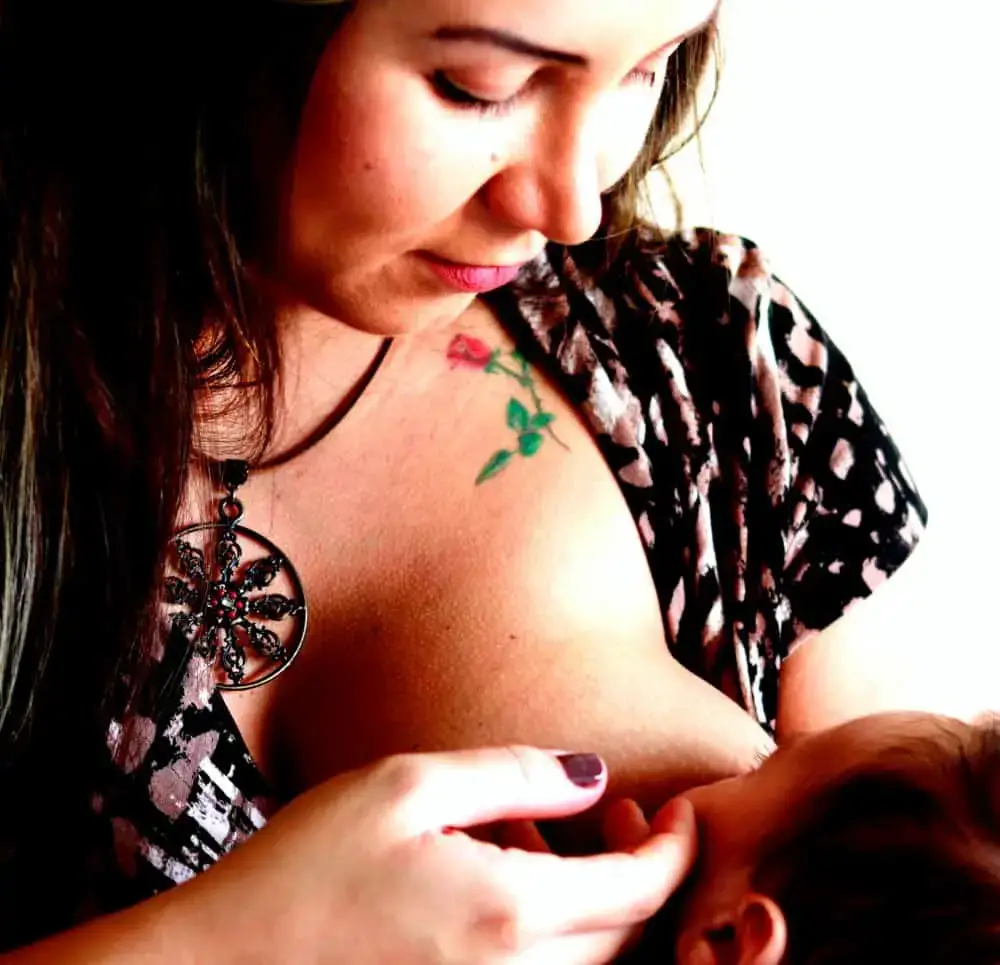When my first child was born, I was advised by some well-wishers to follow baby-led breastfeeding.
Since I was a first time mother, I did not know much and I started to do some research online and also started talking to friends and medical experts to learn more about it.
This is what I found out.
Read on till the end to know about baby-led breastfeeding
With baby-led breastfeeding, the feeding of your baby is guided by your baby, not by you. This approach is based on the baby’s own ability to find the mother’s breast and latch on to it as soon as the baby is put close to the breast, skin-to-skin.
The approach became popular again through the work of Dr. Christina Smillie, a pediatrician and lactation consultant. The approach is based on the idea that that human babies, like other newborn mammals, have the instinct to look for their mother’s breast and latch on to it to feed, the moment they are given the chance. This is a theory also known as biological nurturing.
Table of Contents
How does it work?
Hold your baby close to your chest, skin-to-skin. This skin-to-skin care is also called “kangaroo care”. This helps your baby to act naturally and instinctively, making it easier and natural for your baby to latch on to your breast.
Note, skin-to-skin care can be done by other caretakers as well to calm and soothe the baby, not just for breastfeeding.
Steps to learning breastfeeding
- Take it slowly. About 15 minutes before breastfeeding, put baby skin-to-skin between your breasts. Your baby should wear a diaper, though.
- Let your baby take the lead from there. If he stretches for the breast, squirms, or bobs his head it’s a sign that he’s hungry. Remember to support your baby’s head, but don’t stop him from moving or force him to latch onto the breast.
- You can also try to express a few drops of breast milk to entice his sense of smell.
- Let him make contact with your nipple and/or breast with his mouth open. Then fill his mouth with your breast, to give him a chance to latch on properly.
Traditional vs. baby-led breastfeeding
With traditional breastfeeding, babies are given short, regular feeds rather than allowing the baby to choose when to feed and for how long as with baby-led feeding.

So, there are two very different approaches to breastfeeding. In one approach the feeding is led by the baby, and is known as baby-led breastfeeding or breastfeeding on demand. In the other approach, the feeding is led by the clock. This approach is known as scheduled, or restricted breastfeeding.
After noticing poor weight gain after baby-led feeding became more common, researches set up a study at a Bradford GP practice to look into the matter. The case was reported by the BBC.
The study involved 63 mothers who exclusively breastfed their babies. Half of the women used one breast to feed their baby, as and when the baby wanted milk and they were told to only use the second breast if the baby wanted more milk.
The other group of women were told to feed from each breast for no longer than 10 minutes at a time, and to feed their baby about every three hours during the day, and on demand at night. The researchers found that babies in this group drank for longer, and gained more weight in the first to six-to-eight weeks.
This was a small study and it’s not sure that the findings will be the same in all populations, but it means that if baby-led breastfeeding doesn’t work for a mother and her baby, she can go back to traditional breastfeeding.
The researchers came to the conclusion that baby-led feeding is the best, but the baby must drink from both breasts. They said that if the baby doesn’t drink from the second breast which is also full of milk, th body produces a kind of protein that stops the body producing more milk. When this happens, it interferes with the feeding process afterward.
Current guidelines are in favour baby-led breastfeeding and a Cochrane review of studies that compare baby-led with scheduled breastfeeding found that there is no evidence for changing this recommendation.
So, it is in your best interest and the best interest of your baby to feed him on demand. When he shows that he is hungry, let him nurse on both breast until he shows that he has had enough.
How often do babies typically feed?
There is no hard and fast rule for how often babies feed. It depends on the individual baby and it varies from culture to culture.
According to La Leche League International, research has shown that if the first nursing happens within an hour after birth and often on the second day of your baby’s life, your body is likely to produce a good amount of milk by the fifth day after birth. This is because milk production is mainly a supply-demand situation in the early days: the more milk your baby gets from your breasts, the more milk your body makes afterward.
LLI recommends that from your baby’s second day and throughout the following few days, you should aim to nurse your baby 8 to 12 times (or even more) in 24 hours, that is day and night. That comes down to a feed every two hours or so. This frequency will help your baby to produce milk, and it will help your baby to gain weight. According to LLI, it will also protect your baby against or treat jaundice.
How can you tell if a baby is hungry?

Your baby will start by giving you subtle signs that he is hungry and if you don’t respond quickly, he will become increasingly unhappy.
It may feel as if you have just nursed your baby and he can’t possibly be hungry again.
However, remember, your baby’s stomach is very small at this stage and he can only drink an ounce or two at a time.
Your milk is also uniquely ideal for your baby so he can digest it easily and quickly.
Also, your baby may start feeding at 11 am and finish at 11:45.
He may then show signs of hunger again at 1 pm which is only 45 minutes after his last feed but 2 hours after his last feed started.
Watch out for the following cues from your baby to know if he is hungry and ready for a feed.
Subtle cues (this is the beginning stage). His eyes are moving although they are closed; his eyelids flutter; he makes little mouth movements; he appears restless; he moves his hands toward his mouth.
Less subtle (becomes more persistent). There is more physical movement. He might turn his head from side when you touch his cheeks and he makes whimpering sounds.
Obvious signs (he’s clearly unhappy). At this stage, your baby shows signs of discomfort, he starts crying and tenses his body and mouth and his breathing becomes faster.
Tip: breastfeed in time
As soon as you see your baby becoming more alert, get ready to feed him; don’t wait for him to start crying. If you do this, he is more likely to feed peacefully. If you wait until he starts crying, he will be too distressed to latch onto your breast and start feeding. In this case, you will have to calm him down first before you can start the feed.
How can you be sure that your baby is getting enough milk from you?
The number of wet and dirty nappies will give you an indication that your baby is getting enough or too little milk.
According to LLI, a baby should have a minimum of 2 to 3 wet diapers and 2 stools over the second and third days.
If your baby has 5 or more wet nappies and his urine is a pale yellow and he produces at least two stools on the fourth and fifth days, he is getting enough milk from you.
For the rest of the first month, your baby should have at least two diapers with mustard color stools and six to eight wet diapers every day.
After about six weeks, your baby should only have one stool per day and six to eight wet nappies. If you are in any doubt, take your child to the clinic to be weighed. If he is gaining weight and reaching milestones, he’s getting enough milk and doing fine.
Conclusion
With baby-led breastfeeding, baby controls the supply of milk. This approach encourages close physical contact between mothers and their babies with no restrictions placed on how long a baby can feed.
A Cochrane review found that there is no evidence from new studies that evaluate the effect of baby-led compared with scheduled breastfeeding. So, the researchers recommend that mothers should go with baby-led breastfeeding.
If you watch for signs from your baby, you’ll know when he needs a feed and you’ll know from the number of wet and soiled diapers if he’s getting enough milk from you.
Baby-led breastfeeding is nature’s way to help your newborn thrive, do give it a try.



